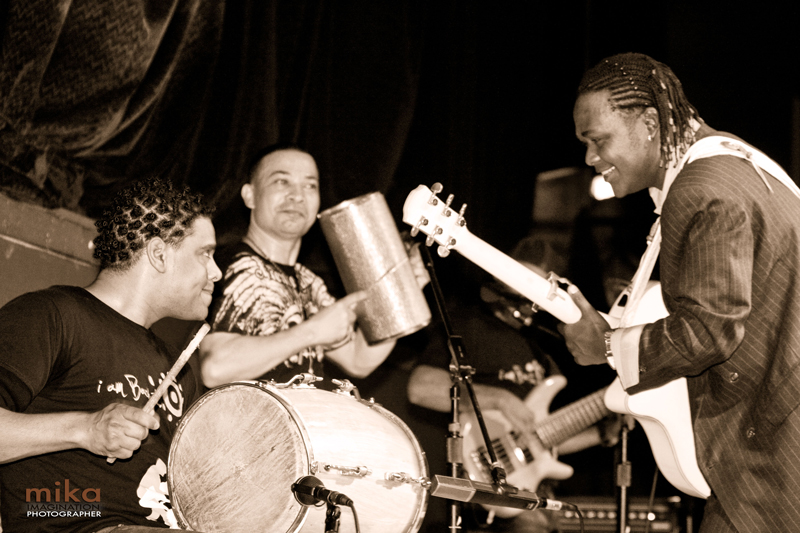(headline image: Joan Soriano, roots bachatero – Photograph: Mika Mika © iASO Records, 2011)
Bachata is one of the most popular and best known Dominican musical genres. It’s a type of music and dance that originated in the marginal neighborhoods of the Dominican Republic. It is typically played with guitars and percussion and regarded as a derivative of the bolero in combination with son cubano and other influences from the Spanish-speaking Caribbean.
Bachata lyrics commonly delve into themes of love, treachery, jealousy, and desperation, while the music typically adheres to a 4/4 time signature.
In traditional bachata performance, the maracas that are typical of the bolero were replaced by the güira scraper. Additionally, bachata incorporated the virtuosic performance of the bongo akin to son cubano, along with guitars in the style of popular Latin American trios found in Cuba and Puerto Rico. Initially, this raw interpretation was known as the guitar bolero.
Emerging from the urban margins of bars and brothels in Santo Domingo, bachata was disparaged during the 1920s through the early 1970s, dismissed as music of the lower classes and labeled “music of bitterness.” This notion referred to the melancholic state induced by unrequited love, a theme consistently reflected in its compositions. Its dissemination during this period was limited to a few radio stations, as it was considered vulgar music.
Mass interest in the rhythm began to grow in the 1980s, coinciding with its increasing prominence in the media. On December 11, 2019, UNESCO declared bachata an intangible cultural heritage of the Dominican Republic.
Bachata has evolved significantly, incorporating new rhythms and instruments such as congas, saxophones, and timbales, while also integrating elements from various musical genres such as pop, R&B, and electronica. Previously characterized by erotic and sexual undertones, particularly before the 1980s, the genre has transitioned towards themes of love, heartbreak, nostalgia, and portraying women as symbols of affection and desire.
Key figures in the later 20th century include Leonardo Paniagua, who was highly successful in the 1970s and 1980s; worldwide bachata star Juan Luis Guerra; Blas Durán, who introduced the electric guitar to bachata music; and modern bachata pioneer Ramón Torres who added piano and accordion; among others.
The evolution of bachata has propelled it into the mainstream, solidifying its identity with distinct characteristics. Renowned voices such as Frank Reyes; Romeo Santos, “El Chaval de la Bachata”; Zacarías Ferreira; Luis Miguel del Amargue; Elvis Martínez; Teodoro Reyes; Raulín Rodríguez; Yoskar Sarante; Chicho Severino; Luis Vargas; and Joe Veras emerged as key figures in popularizing the genre domestically.
The genre’s definitive internationalization occurred with the emergence of the group Aventura, led by Romeo Santos, whose solo career became synonymous with the new era of bachata, earning global recognition in the Hispanic world and beyond. Additionally, international exposure expanded through acts like the Dominican duo Monchy & Alexandra; the American group Xtreme; and soloists such as Puerto Rican singers Ivy Queen and Chayanne; Dominican American artist Prince Royce; Mexican vocalist Maite Perroni; former Aventura member Toby Love; and Daniel Santacruz, all achieving success in bachata despite not originating from the Dominican Republic.
In recent, some Dominican musicians like Joan Soriano, also known as the Duke of Bachata, have developed a type of grassroots bachata that marks a return to traditional forms of acoustic bachata.
Bachata Training
The Academia de Bachata is a school that provides bachata music education.
Bachata music compilations:
Bachata books:
- Bachata A Social History of a Dominican Popular Music (Temple University Press)


